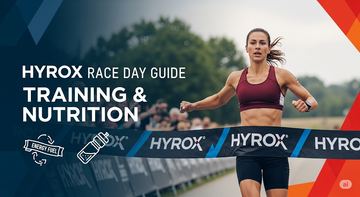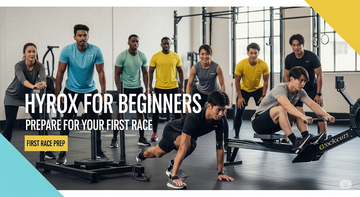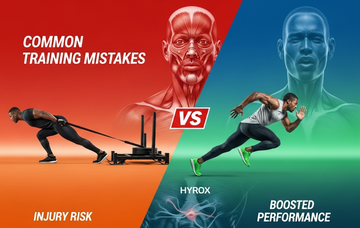Are you making crucial workout mistakes that could be holding you back from reaching your fitness goals?
It’s astonishing how simple errors—often overlooked—can derail even the most dedicated efforts, leading to frustration and injury.
You might relate to the struggle. If you’ve been pouring your heart and soul into your workouts only to be met with stagnation or, even worse, injuries, it’s essential to acknowledge that you’re not alone. Many fitness enthusiasts face the same frustrations as you, and these workout mistakes could be hiding in plain sight.
Addressing these mistakes is crucial for your success right now. Ignoring them can lead to missed opportunities and setbacks, leaving you feeling defeated. The sooner you identify and correct these errors, the sooner you’ll be on your way to seeing the results you desire.
In this article, we’ll explore the ten most common workout mistakes you need to avoid to foster injury prevention and achieve success. With practical insights and tips, you’ll be well-equipped to refine your approach and elevate your fitness routine.
Let’s dive into the essential changes you can make to unlock your full potential and achieve the success you’ve been striving for!
TLDR
This article highlights key workout mistakes that can hinder your fitness journey and lead to injuries. Here’s a concise overview:
Common Workout Mistakes:
-
Improper Form: Incorrect techniques can lead to injuries and ineffective workouts.
- Tip: Focus on maintaining correct technique to engage muscles and minimize risk.
-
Lack of Consistency: Irregular training schedules can stall progress.
- Tip: Stick to a regular workout routine to enhance adaptation.
-
Insufficient Warm-Up/Cool-Down: Increases injury risk and muscle stiffness.
- Tip: Allocate time for both warm-ups and cool-downs to prepare and recover effectively.
-
Failure to Adjust Goals: Not reassessing goals can lead to plateaus and burnout.
- Tip: Regularly revise fitness goals to ensure they remain realistic and achievable.
Importance of Correcting Mistakes:
- Improved Performance: Fixing errors enhances technique and workout effectiveness.
- Faster Results: Recognizing mistakes expedites progress towards fitness goals.
- Reduced Injury Risk: Addressing errors minimizes the chances of injuries.
- Increased Confidence: Correcting mistakes boosts self-assurance in your abilities.
Taking time to evaluate your workout practices can lead to significant gains in performance and safety. For additional guidance, check out Ultimate Sup’s products to support your fitness goals. What mistakes have you encountered on your journey?
Definition of Workout Mistakes
Understanding what constitutes a workout mistake is the first step toward achieving fitness success. Mistakes in exercise routines can hinder progress and lead to injuries, making awareness and correction vital.
Overview of Workout Mistakes
Workout mistakes can vary from minor errors to significant missteps. Some common examples include:
-
Improper Form:
- Using incorrect techniques during exercises can lead to injuries and reduced effectiveness. For example, performing squats with a rounded back can strain the spine, while improper lifting techniques can damage joints.
-
Lack of Consistency:
- Inconsistent workout schedules can stall progress. Irregular training can prevent the body from adapting and improving, leading to frustration.
-
Insufficient Warm-Up or Cool-Down:
- Skipping warm-ups can increase the risk of muscle strains or tears. Failing to cool down properly may cause muscle stiffness and hinder recovery.
-
Failure to Adjust Goals:
- Not reassessing and adjusting fitness goals can result in plateaus. Progressing with unrealistic goals can lead to disappointment and burnout.
Importance of Recognizing and Correcting These Mistakes
Recognizing and correcting workout mistakes is essential for maximizing effectiveness and improving safety. Here’s why it matters:
-
Enhances Effectiveness:
- Correcting form and technique ensures that exercises target intended muscle groups, leading to better results.
-
Improves Safety:
- Acknowledging and addressing mistakes can significantly reduce the risk of injuries, ensuring a safer workout environment.
-
Boosts Motivation and Confidence:
- As you learn to recognize and fix errors, you build confidence in your abilities, increasing motivation to continue your fitness journey.
Fostering an understanding of these concepts is essential for both new and experienced individuals in their exercise routine.
Take the time to evaluate your habits and consider how you can improve your workouts. What mistakes have you faced during your fitness journey? Share your thoughts in the comments! To support your fitness endeavors, explore Ultimate Sup's products designed to enhance your workout experience and success.
Importance of Proper Form
Proper form in exercise is crucial not only for enhancing performance but also for ensuring safety. Adopting correct technique can significantly improve workout effectiveness while minimizing the risk of injuries.
How Proper Form Affects Performance and Safety
-
Enhancing Effectiveness:
- Good form allows you to target the intended muscle groups efficiently. This means that each exercise you perform will deliver the results you want, whether it’s building strength, improving endurance, or sculpting your physique.
-
Reducing Injury Risk:
- Improper technique can lead to strains, sprains, and other injuries. For example, lifting weights with a rounded back can increase spinal stress, while squatting with the knees caving in can lead to joint damage. Maintaining proper form helps protect your body and encourages long-term participation in fitness.
Exercises Where Form is Crucial
-
Squats:
- Proper Form: Feet shoulder-width apart, chest up, and back straight. Lower your body by bending at the hips and knees, ensuring your knees stay aligned with your toes. Keep your weight on your heels and go as low as comfortable.
- Impact of Proper Form: Proper squats strengthen the lower body and core without risking injury. Incorrect form, such as leaning forward too much or letting knees cave in, can lead to knee and back injuries.
-
Deadlifts:
- Proper Form: Stand with feet hip-width apart, gripping the barbell just outside your knees. Keep your back straight, engage your core, and lift the weight by standing up straight, using your legs rather than your back.
- Impact of Proper Form: Functionally executed deadlifts target multiple muscle groups effectively. Poor form can lead to serious back injuries and diminished lifting potential.
-
Push-Ups:
- Proper Form: Start in a plank position, hands slightly wider than shoulder-width. Keep your body straight from head to heels as you lower down, ensuring your elbows stay close to your body before pushing back up.
- Impact of Proper Form: Correct push-ups build upper body strength without undue stress on the shoulders. Failing to maintain proper body alignment can lead to shoulder pain and reduce exercise effectiveness.
Incorporating correct form into these exercises ensures not only improved performance but also significantly reduces the potential for injury. Remember, prioritizing form over weight is essential for long-term fitness success.
What are your tips for maintaining proper form during workouts? Share your insights in the comments! For additional resources on effective training techniques and products that support your fitness journey, explore what Ultimate Sup has to offer.
The Role of Recovery in Workout Success
Importance of Proper Recovery Strategies for Muscle Health
Recovery is a critical component of any workout regimen, and understanding its importance can dramatically improve muscle health and overall performance. Here are some key points highlighting why recovery is essential:
-
Muscle Repair and Rebuilding:
- After intense workouts, muscles experience microscopic tears. Recovery allows these muscles to heal and grow stronger, increasing their capacity for future workouts.
- Adequate rest enables the synthesis of new proteins, which are vital for muscle tissue repair and growth.
-
Restoration of Energy Supplies:
- Recovery restores glycogen levels in muscles depleted during exercise. Proper nutrition and hydration during recovery periods enhance energy availability for subsequent workouts.
-
Hormonal Balance:
- Recovery aids in regulating hormones such as cortisol and growth hormone, both of which play significant roles in muscle development and overall health.
-
Mental Recovery:
- Recovery is not only physical; it also provides mental respite. Allowing your mind to recuperate can help maintain motivation, prevent burnout, and improve future workout performance.
Effects of Insufficient Recovery on Performance and Injury Risk
Neglecting proper recovery can lead to dire consequences for your workouts:
- Increased Fatigue: Lack of recovery results in cumulative fatigue, diminishing overall performance in subsequent workouts. This can lead to reduced strength, endurance, and motivation.
- Higher Injury Risk: Insufficient recovery can lead to overuse injuries, such as tendinitis or stress fractures, as the body is not given adequate time to heal.
- Plateaus in Progress: Without recovery, muscle adaptation slows down. Instead of making gains, you may find yourself stuck at the same performance level, leading to frustration.
- Mood Disturbances: Overtraining without proper recovery can lead to irritability and decreased morale, impacting both workouts and overall well-being.
In summary, prioritizing recovery is crucial for achieving fitness goals and avoiding setbacks. By implementing effective recovery strategies, you support your body's repair processes and ensure you can perform at your best.
Have you been giving enough attention to your recovery? Share your experiences in the comments! To support your recovery efforts further, explore Ultimate Sup’s range of products designed to enhance muscle recovery and performance.
Importance of Nutrition for Fitness
Nutrition plays a pivotal role in every aspect of fitness—from workout performance to recovery. Understanding how to fuel your body appropriately can significantly enhance your results and overall well-being.
How Nutrition Impacts Workout Performance and Recovery
-
Fueling the Body:
- Proper nutrition provides the energy your body needs for exercise. Consuming the right nutrients before a workout helps to optimize performance, improving endurance and strength.
-
Enhancing Performance:
- The right balance of nutrients can enhance cognitive function and reaction time during workouts. This means more efficient training sessions and better overall results.
-
Aiding Recovery:
- Nutrition is crucial for recovery after physical activity. It helps repair muscle tissues, replenish glycogen stores, and reduce inflammation, paving the way for consistent and effective training.
Common Nutritional Mistakes Made by Those Who Exercise
-
Neglecting Pre- and Post-Workout Nutrition:
- Skipping a meal before a workout can lead to decreased energy levels and performance. Similarly, neglecting post-workout nutrition can impede recovery.
-
Inadequate Hydration:
- Dehydration can significantly impact performance and recovery. Many individuals underestimate their fluid needs. Drink water consistently throughout the day, and consider electrolyte-replenishing drinks post-exercise.
-
Relying Too Heavily on Processed Foods:
- Processed foods often lack essential nutrients and can lead to energy crashes. Focus on whole foods that provide the necessary nutrients for sustained energy and recovery.
Incorporating proper nutrition into your fitness routine is essential for achieving desired results and maintaining a healthy lifestyle.
Ready to enhance your nutrition? Explore Ultimate Sup's products designed to support your nutritional needs, including options like Mutant BCAA 9.7 to aid recovery and performance. Check them out today!
Benefits of a Proper Warm-Up
A proper warm-up is crucial for preparing the body for physical activity, enhancing performance, and preventing injuries. Taking the time to warm up effectively can profoundly impact your workout results.
How a Warm-Up Prepares the Body for Exercise
-
Increases Blood Flow:
- Warming up increases blood circulation to the muscles, promoting oxygen delivery and nutrient flow. This prepares your body for more demanding activities and helps improve performance.
-
Improves Flexibility:
- Dynamic stretching during warm-up routines promotes flexibility by enhancing muscle elasticity. This increased range of motion is crucial for performing exercises with proper form and efficiency.
-
Enhances Muscle Performance:
- Warming up activates muscles and prepares them for intense activity, leading to better strength and endurance during workouts. Muscles that are properly warmed are more responsive, allowing for improved performance.
-
Reduces Injury Risk:
- By preparing the muscles, joints, and ligaments, a proper warm-up minimizes the likelihood of strains, sprains, and other injuries. It ensures your body is ready to handle the stresses of the workout.
Recommended Warm-Up Exercises to Prevent Injury
Incorporating a blend of dynamic movements into your warm-up routine can target major muscle groups effectively. Here are some recommended exercises:
-
Arm Circles:
- Stand tall and extend your arms to the sides. Make small circles, gradually increasing the size for 30 seconds, then reverse the direction.
-
Leg Swings:
- Hold onto a wall or support and swing one leg forward and backward for 15 swings. Switch to your other leg.
-
High Knees:
- Jog in place while lifting your knees toward your chest. Aim for a quick pace, maintaining for 30 seconds.
-
Bodyweight Squats:
- Perform squats at a comfortable pace, focusing on form. Aim for 10-15 repetitions to activate your lower body.
-
Lunges with a Twist:
- Step forward into a lunge position and twist your torso toward the front leg. Alternate legs for 5-8 repetitions on each side.
Incorporating these warm-up exercises into your routine not only prepares your body but also enhances your exercise experience.
Ready to optimize your workout results? Share your warm-up favorites in the comments! For recovery support after your workouts, check out Ultimate Sup's range of products that can complement your fitness journey.
Identifying Personal Workout Mistakes
Recognizing personal workout mistakes is vital for improving fitness outcomes. Engaging in self-assessment techniques allows you to pinpoint areas that may hinder your progress and overall performance.
Techniques for Self-Assessment of Workout Habits
-
Maintain a Workout Journal:
- Documenting your workouts helps track exercises, sets, reps, and overall feelings during each session. This practice allows you to analyze trends in performance and identify areas needing improvement, such as decreasing strength or endurance.
-
Video Analysis:
- Recording your workouts can provide visual insights into your form and technique. Watching yourself perform exercises enables you to notice mistakes you might not feel during the workout, such as improper posture or movement patterns.
-
Seek Feedback from Peers:
- Don't hesitate to ask workout partners or friends for their input on your form and technique. Having a second pair of eyes can uncover mistakes you may not recognize.
Importance of Tracking Progress to Identify Errors Over Time
Tracking your progress is essential to identify and correct errors in your workout routine. When you monitor your performance consistently, you gain invaluable insights into your training at various stages, making it easier to set and refine your fitness goals.
- Set Measurable Goals: Establish specific, achievable goals, such as increasing your squat weight by 10% in a month. Measurable objectives allow you to evaluate progress accurately and make adjustments as needed.
- Utilize Apps or Tools: Take advantage of fitness apps and wearable technology that monitor various aspects of your activities, such as heart rate, repetitions, and recovery time. Many of these tools can integrate with your workout journal for a holistic view of your fitness.
By actively engaging in self-assessment and tracking your workout progress, you can uncover personal mistakes, enhance your workout routine, and ultimately achieve your fitness goals.
What strategies do you use to evaluate your workout habits? Share your experiences in the comments! For more resources to support your fitness journey, explore Ultimate Sup's range of products that can help optimize your performance and results.
Conclusion
In your fitness journey, recognizing and rectifying common workout mistakes is paramount for achieving your goals safely and effectively. Key elements such as maintaining proper form, ensuring consistency, and prioritizing recovery not only enhance your performance but also significantly reduce the risk of injuries. By addressing these crucial aspects, you can cultivate greater motivation and confidence, setting the stage for continuous progress.
Don’t wait to unlock your full potential—visit Ultimate Sup now to explore high-quality products that support your workout and recovery needs. Elevate your fitness experience with our trusted supplements and stay on track toward your goals. Embrace the transformation today and share your fitness journey with us—your success story could inspire others!










